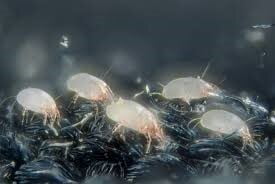Monitoring
Do have a regular inspection of the products so that you will be aware of the possible problem before occurrence (source, presence, and level).
Identification
If there is a pest attacked product, look for the type of pest, its nature and extent of damage it has already done. If the monitoring and identification are actioned correctly, you can easily choose the control methods for them. Go for all possible means to achieve good, cheap, and safe pest control methods.
Different methods of control
Drying
A simple and effective method is drying your stored products in the sun. Generally, seeds must be dried to a moisture level of 11-12% before storing them. It does not mean these seeds will be completely free from the pests until the last bit, but this may increase the number of days for which seeds can be stored safely as compared to seeds which have a higher moisture content.
Clay or red soil coat
Coating with oil
Use of improved container for storage
location of storage
Other than the above methods, we can also add some additives while storing the products.
- Wood ash: Wood ashes of mango, tamarind, casuarina trees can be mixed with the food grains. Along with the wood ash, we can also use chili, pepper powder, pyrethrum, or Mexican marigold seeds to increase the protection against pests.
- Lime: Mixing of quick or burnt lime 0.3% gives good results against weevil’s damage.
- Sand: Fine sand mixed with seeds which are of bigger size (chickpea, pigeon pea) will give protection from pest as the space between seeds will be filled by sand and thereby avoid the egg-laying and insect movement.
- A mixture of plant parts: Storing the seeds along with Neem leaves, crushed seeds and oil extracts, lantana plant, eucalyptus tree leaves, aloe plant (dry, ground and dust is mixed with grains/seeds), chili peppers (ripe, dried pods), sun hemp and datura seeds (NOTE: Datura seeds are poisonous, be cautious while separating and using the grains/seeds)
The majority of the methods mentioned above are applicable for smaller size quantities. For a larger quantity of storage, like in the warehouse for export and import purpose, one should give more importance to the warehouse location, using insecticides and fumigants, etc.
Happy Growing!
